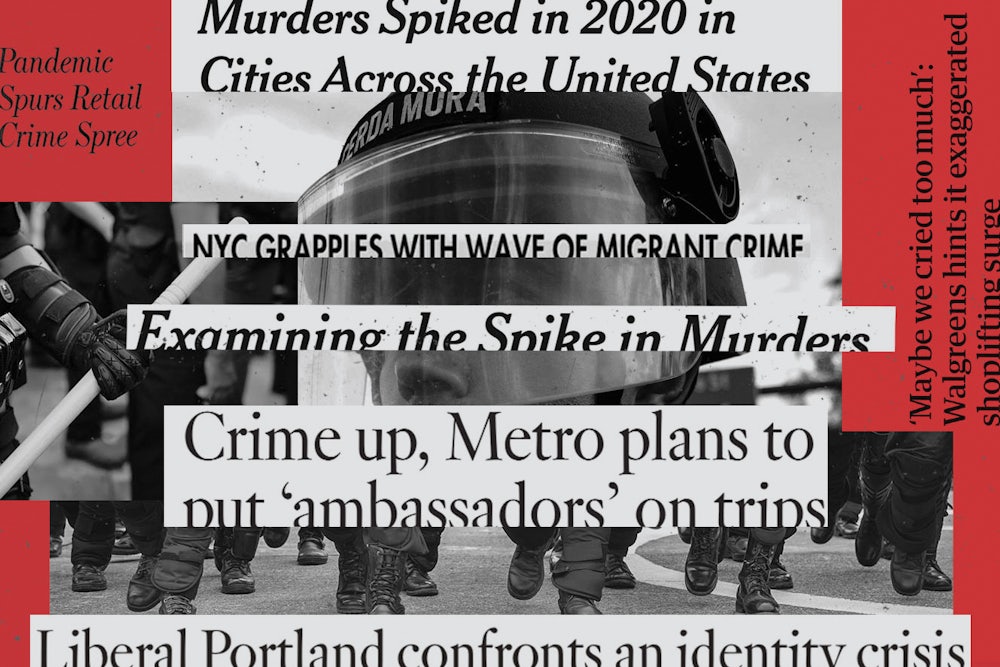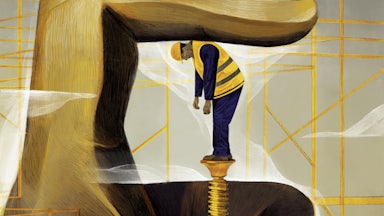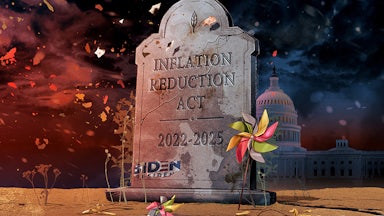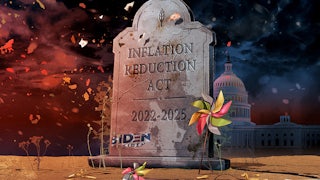Sharnalle Mitchell was at her home in Montgomery, Alabama, one evening in January 2014, watching TV with her two young children, when police showed up and took her into custody. It seems she’d neglected to pay a traffic fine issued years before. Unable to make bail, Mitchell spent the night locked up, after which she was brought into court, where a judge informed her that, due to additional surcharges, she was now on the hook for several thousand dollars. She could either pay up or serve 58 days in jail, a sentence reduced somewhat when she agreed to perform unpaid labor cleaning the facility during her incarceration.
Watching the exchange from a seat in the gallery, inconspicuous in a hooded sweatshirt, was a lawyer named Alec Karakatsanis. Then just 30 years old, the newly minted civil rights attorney instantly saw in Mitchell’s plight the makings of his first case. Mitchell v. City of Montgomery was the beginning of what would become an epic, long-running battle with the U.S. criminal justice system—or, as he puts it, ever mindful of the semantic underpinnings of our dehumanizing legal apparatus, the “punishment bureaucracy.” Since then, Karakatsanis and his nonprofit, Civil Rights Corps, which now employs more than 35 people, have successfully brought suits against numerous municipalities for what he considers the criminalization of poverty. As a result, hundreds of thousands of indigent defendants have been released from illegal detention, and many more have been spared it altogether.
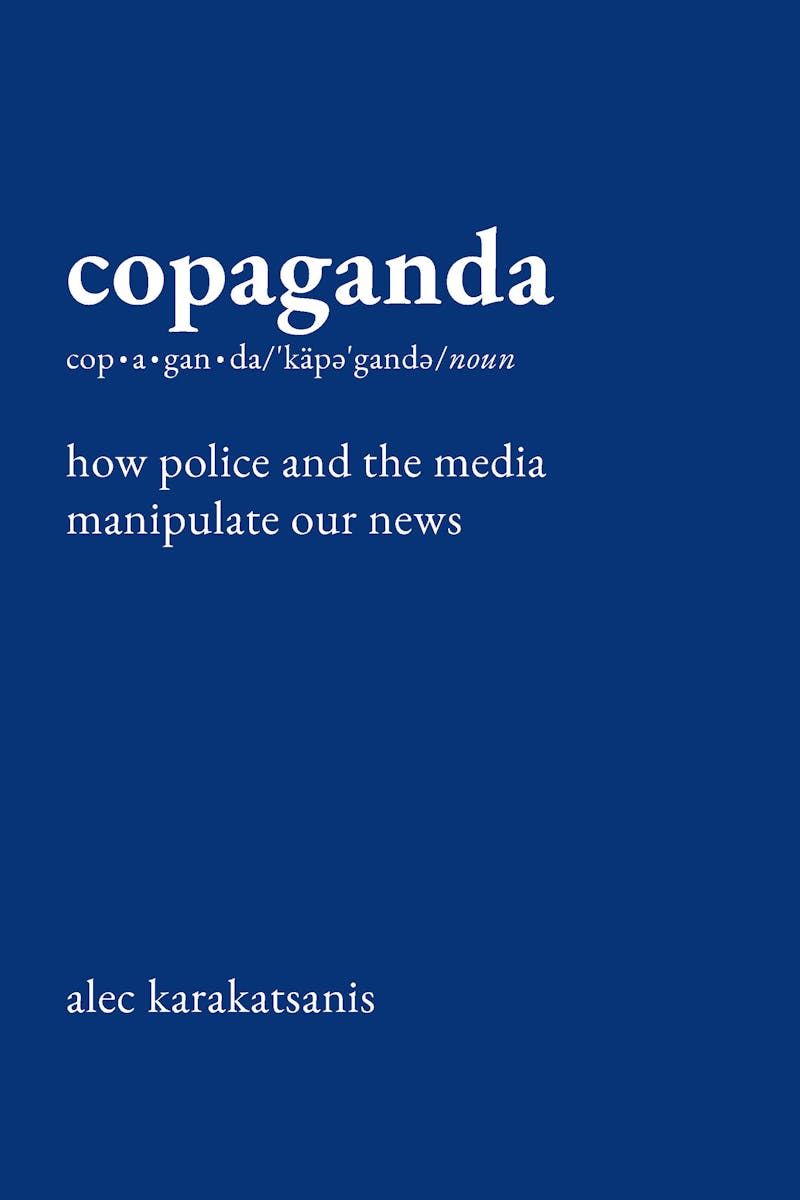
Karakatsanis has an impressive track record as an attorney—and is also the author of the well-received 2019 book, Usual Cruelty, which took his colleagues in the legal profession to task for perpetuating an unjust system. He is more widely known, however, for his work as a media critic, tirelessly laying bare the pro-policing biases of The New York Times and other outlets. Between 2003 and 2017, the Times employed an independent public editor, whose job was to mediate between disappointed readers and the newsroom, rapping knuckles when appropriate. When the paper cut the position in 2017, publisher Arthur Sulzberger Jr. fobbed off the role of holding the institution accountable to “our followers on social media and our readers across the internet.”
Enter @equalityalec, who in a series of Twitter threads, and eventually a free newsletter, has dismantled the paper’s criminal justice reporting with prosecutorial zeal. Based on those efforts, Karakatsanis’s new book, Copaganda: How Police and the Media Manipulate Our News, is an instructive, often enraging look at how elite publications mounted a sustained defense of the status quo after the police murder of George Floyd touched off the largest political mass movement in U.S. history. Karakatsanis makes a persuasive case that the establishment media—spoon-fed a diet of self-serving spin by taxpayer-funded flacks (the NYPD’s press shop has more than doubled in size since the protests) and a busy cadre of criminology “experts”—has misled the public about the causes of crime, forestalled meaningful reforms, and distracted us from pervasive social inequities.
Karakatsanis’s holy war against the Times began in 2022, when the paper printed a series of articles suggesting that the Covid-era rise in homicides was in part attributable to the protests against police violence, either because cops “pulled back,” as the paper put it, or because disrespect for police “prompted more people to try to take the law into their own hands.” The paper presented no evidence for such claims, nor did its sources, who were often lumped together under phrases like “experts say” and “analysts noted.” Perhaps more problematic, Karakatsanis pointed out in Twitter threads viewed millions of times, was the omission of any experts who might have offered a contrary view.
As it happens, such researchers do in fact exist. For instance, Karakatsanis cites a 2017 meta-analysis conducted by three criminal justice scholars at the University of Cincinnati, which found, as the authors wrote, that “the effect on crime of adding or subtracting police is miniscule [sic] and not statistically significant.” Another 2017 study determined that when the NYPD chose, in late 2014, to engage in a work stoppage (a so-called blue flu) amid a beef with Mayor Bill De Blasio, reports of major crimes substantially decreased. And then there was the 2021 meta-review of 116 studies demonstrating that jailing people has “no effect on reoffending or slightly increase[s] it when compared with the effects of ... sanctions such as probation.”
On the other hand, researchers in 2022 identified an across-the-board 20 to 32 percent drop in arrest rates, attributable not to aggressive policing, pretrial detention, or increased respect for law enforcement but to … Medicaid expansion.
Nonetheless, when murder rates fell in 2023, the Times was at it again, identifying three “likely” reasons for the decline: the end of the pandemic (a reason it mostly dismissed), the waning of anti-police protests, and the hiring of more officers. Again, the paper cited no evidence for these claims, despite their significant policy implications. Perhaps paying heed to what had by then become a virtual army of online critics, however, it did include a conspicuous caveat. “Experts caution that these three explanations are not proven,” reporter German Lopez noted, adding, “Crime is an incredibly complicated topic, involving personal disputes, the economy, social services, the political system and more.”
In 1978, Jamaican-born sociologist and cultural theorist Stuart Hall and a team of academics published the landmark study Policing the Crisis, an in-depth look at how the British press elevated “mugging”—a new term, imported from the United States, for a very old crime—to the top of the national agenda. As it happened, there was no crisis. An increase in street robberies that had begun two decades earlier was declining. But armed with a new label, one bearing a distinct racial subtext, the press sensationalized the issue, using it as a stand-in, Hall argued, for broader national anxieties. Judges began imposing ever-harsher sentences, slapping one teenager with an extraordinary 20 years. Mugging had become what sociologist Stanley Cohen called a “moral panic,” when a phenomenon or group “emerges to become defined as a threat to societal values and interests.”
More recent examples aren’t hard to find, as Karakatsanis amply documents. In 2021, a video of a man stealing items from a San Francisco Walgreens went viral. The timing proved convenient for the pharmacy chain, which two years before had quietly announced plans to close 200 stores and now found shoplifters a scapegoat. But it was also useful for a coalition of right-leaning politicians, tech billionaires, real estate interests, and especially police unions who were then mounting a recall effort against progressive D.A. Chesa Boudin. The video quickly became national news, resulting in more than 300 articles, many of which framed the incident as part of a terrifying wave of petty theft attributable to Boudin’s reforms, which included an emphasis on diversion programs (and, perhaps not incidentally, an effort to hold police responsible for misconduct, including one homicide). Boudin’s approach had emboldened thieves, they charged. Eventually, it turned out there had been no wave of shoplifting, as even Walgreens’s CEO admitted a few years later, when he commented on an earnings call that “maybe we cried too much” about retail theft. But by that time the narrative had been firmly embedded in the public mind and the D.A. forced from office, with others soon to follow.
The incident highlights the aggressive P.R. battle waged against progressive prosecutors and bail reform, but it also underlines another of Karakatsanis’s key points: that only certain crimes—often ones committed by the poor, with minimal societal impact—are treated as emergencies, frequently described as “waves” and “surges.” As the media watchdog Fairness and Accuracy in Reporting noted, when Walgreens paid $4.5 million to California employees who’d sued the chain for wage theft (a crime that robs workers of some $50 billion per year), it occasioned just a single news item, in a legal trade publication. No one demanded a crackdown by law enforcement, or the firing of the state attorney general for refusing to “get tough” on the chain’s white-collar perps. As Karakatsanis writes, “Addressing financial crimes could significantly alter the distribution of wealth, the array of life opportunities, and physical safety for hundreds of millions of human beings. But neither the police nor the media pay much attention to them, and they certainly don’t foment panic about them.”
Karakatsanis details a number of other ways copaganda distorts our sense of just what behavior qualifies as crime, how prevalent it actually is, and how society might address it. Individual incidents of street-level crime, for instance, are often addressed as breaking news (with reporting based almost entirely on police tips and press releases). More prevalent and vastly more consequential criminal behavior involving fraud, corruption, tax evasion, and other systemic abuses is covered, when covered at all, by investigative units, resulting in deep dives more likely to win prizes than spark sustained public outrage. As for violence perpetrated by police themselves—who frequently assault peaceful protesters and have killed more people in each consecutive year since the George Floyd protests—it’s considered routine and is not even counted in crime stats. And many of us are by now familiar with the journalistic habit of using a passive voice (“an officer-involved shooting occurred”) in reporting such incidents.
Other editorial chestnuts that subtly warp our thinking include the beloved “tough on crime” (never mind research indicating that “proactive” policing may actually increase crime) and “quality of life,” which focuses public attention on the discomfort of having to step over a homeless person, for instance, rather than society’s failure to provide enough homes. Indeed, the number of homeless increased by 18 percent last year to its highest level ever recorded. And yet, somehow we were spared breathless wall-to-wall coverage of a “surge in evictions,” daily interviews with destitute families, or urgent calls for elected officials to immediately address the “crisis.” Instead, we’re treated to the ugly spectacle of armed government agents assaulting suffering people and stealing their belongings, typically referred to as a “sweep.”
When, during Hillary Clinton’s 2016 run for president, a Black Lives Matter activist pressed her to account for her 1996 reference to “the kinds of kids that are called superpredators—no conscience, no empathy,” it was a welcome reminder, two decades on, of the incalculable damage done by one of copaganda’s greatest triumphs. Clinton had borrowed the comparison of urban adolescents to bloodthirsty beasts of prey from a highly influential 1995 cover story in The Weekly Standard. In that story, Princeton political scientist John DiIulio claimed Americans were “sitting atop a demographic crime bomb” that would soon “unleash an army of young male predatory street criminals who will make even the leaders of the Bloods and Crips ... look tame by comparison.” Due to what he termed the “moral poverty” of urban neighborhoods, these teenagers “will do what comes ‘naturally’: murder, rape, rob, assault, burglarize, deal deadly drugs, and get high.”
Though his prediction was racist nonsense—juvenile crime was already falling when the piece was published and declined considerably thereafter—its effect was profound. Newsmagazines, broadsheets, and TV networks ran hundreds of stories about the hypothesis, amping up the hysteria. Despite being thoroughly discredited and soon partly renounced by the author, DiIulio’s nightmarish image of remorseless youth of color had touched a dark place in the public psyche. Before long, nearly all 50 states passed legislation allowing the prosecution of children as adults. Many would be sent to adult prison, where they were likely subject to violence and sexual assault; some would receive life sentences, which they are serving to this day.
DiIulio duly resigned in disgrace and left academia. Nah, just kidding—he went on to lead George W. Bush’s Office of Faith-Based and Community Initiatives, co-wrote a U.S. government textbook that falsely downplayed the threat of global warming and misrepresented the separation of church and state, and is now the Frederic Fox Leadership Professor of Politics, Religion, and Civil Society at the University of Pennsylvania.
Karakatsanis, who confines his study to the period between 2020 and 2024, mentions the “superpredator” frenzy only in passing. Hall’s study of the mugging panic also goes largely unexplored, as does the insidious role played by popular entertainment. That feels like a missed opportunity. Placing contemporary copaganda in a larger historical and cultural context would allow us to see more clearly how a drumbeat of vivid crime stories and their fictional “ripped from the headlines” counterparts, inevitably focusing on the innate goodness of individual police officers, have misled us about the failures of a system that has victimized millions of people. It would illuminate copaganda’s devastating human impact over the long term. And it might stand as a permanent refutation rather than a maddening snapshot of bad faith in action. It would likely also have made for a more interesting book. Remixed from Karakatsanis’s newsletter and social media threads, the same critiques that felt so revelatory and damning when they appeared on Twitter in real time offer diminishing returns when consumed one after another.
That’s too bad, because Karakatsanis’s argument is so essential and the onrush of copaganda is so corrosive. As he points out, while data on reported crimes, arrests, and convictions lends itself to easy number crunching, the profound social costs of policing are all but impossible to quantify. Yet the media’s habit of addressing street-level crime through the lens of alarming waves and sensational panics rather than as a consequence of long-term social conditions means that “getting tough”—rolling back modest reforms, ramping up arrests, implementing stiffer sentences, sacrificing civil liberties for “public safety”—always seems like the only available solution. “It is a widespread but fatal trap—precisely, a trap of ‘liberal opinion’—to split analysis from action,” Stuart Hall wrote in 1978, “and to assign the first to the instance of the ‘long term,’ which never comes, and reserve only the second to ‘what is practical and realistic in the short term.’”
Indeed, there’s no evidence that crime trends are influenced by police tactics, staffing levels, cash bail, or sentences. As Karakatsanis puts it, “playing whack-a-mole with minor tweak after minor tweak helps powerful people in any given moment avoid the public making linkages between violence and poverty, lack of access to health care, the affordable housing shortage, under-resourced schools, and other root causes.”
Maybe rather than hiring more police, equipping them with ever more deadly weapons, and setting them loose on people like Sharnalle Mitchell and her children, we could begin to envision a society that supports all of its citizens, enforces laws equally, and makes adherence to the rules by rich and poor alike a more appealing option. To do that, we’d need to stop pretending that the constant threat of state violence is some kind of solution rather than what it really is—evidence of a catastrophic societal failure. “Copaganda convinces people that, sadly, much to our discomfort as caring people, there is no way to solve the serious problems of our society,” Karakatsanis writes. “Having reluctantly come to that conclusion, we now have to expand authoritarian measures to manage those problems through violence. We wish we didn’t have to do this, but we’ve tried everything else.”
Of course, there’s another consequence to flooding our streets with cops: the near certainty that they will be utilized not only against a shadowy “other” but against people we know and love. Indeed, it’s not difficult to imagine the remarkable surveillance apparatus, the sweeping investigatory powers, the physical brutality, and the carceral system turned against the comfortable classes who have long relied on this sprawling ecosystem of repression to protect their precarious sense of well-being. Police will be used to infiltrate dissident groups and crush peaceful social movements with unchecked violence. They will be deployed to round up immigrants and separate families. They will come for women seeking medical care, their providers, and anyone who offers them assistance. And trans people. And the political opponents of those in power. And eventually, they might even come for professors, the pundits, and the journalists themselves.
